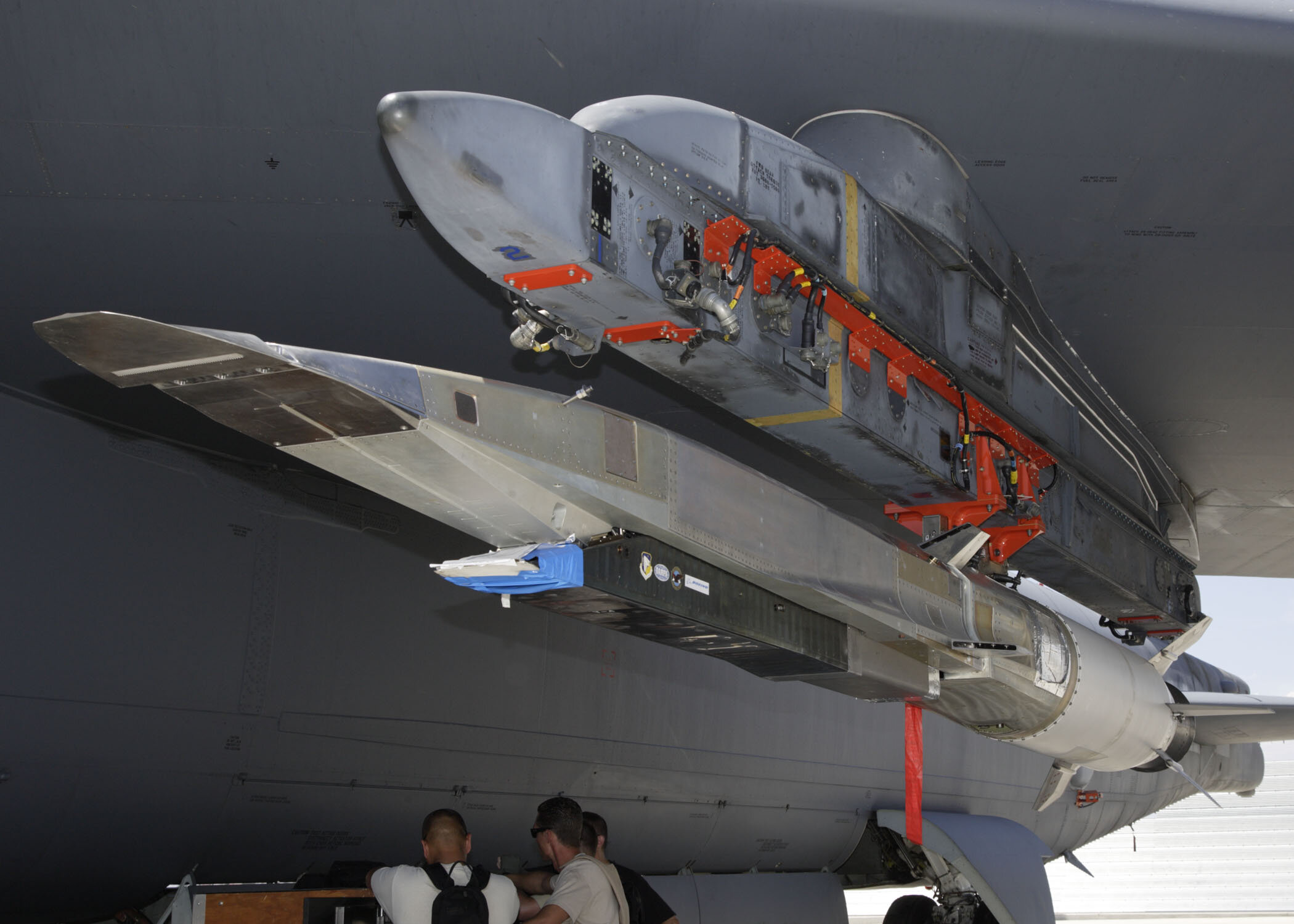PICTURED: The X-51 Waverider prototype hypersonic glide missile.
The latest National Defense Authorization (NDA) for 2021 contains a lot about confronting China and Russia, in what is called “great power competition” and cyberterrorism as part of Trump’s National Defense Strategy.
Research and development of new military assets is also a heavy focus, and includes things like the always perilous F-35 fighter jet, as well as hypersonic missiles and hypersonic missile defense systems.
One of the big new developments is the Pacific Deterrence Initiative, (PDI) for which Congress has appropriated a whopping $7 billion dollars over two years.
In the first half of 2020, the American economy added several trillion dollars to its annual budget deficit, resulting from a combination of policies to support individuals and businesses through COVID-19, heavy-handed lockdown measures that have crippled the economy, and a reduction in world trade.
In some sectors according to the Bureau of Labor Statistics, there were as many Americans working in May as were working in the 70s and 80s, varying by sector, despite the U.S. having a population 33% higher than those earlier decades.
The economic conditions wouldn’t seem to be present to allow for a bold new defense strategy based on construction of new facilities in the Indo-Pacific, drafting of new deterrence, cooperation and training programs and strategies, and investment in unproven and expensive experimental weaponry like the hypersonic missile programs.
Pacific Deterrence Initiative
“As China continues its economic and military ascendance, asserting power through an all-of-nation long-term strategy, it will continue to pursue a military modernization program that seeks Indo-Pacific regional hegemony in the near-term and displacement of the United States to achieve global preeminence in the future,” reads the National Defense Strategy 2018.
China is quite far from the United States, and like the latter’s campaign against Japan in the Second World War, the tens of thousands of islands in the Pacific ocean, the Philippines, and the seas around Indonesia is where the latest U.S. military posture is set to unfold.
The PDI section in the NDA for 2021 is aligned with the President’s National Defense Strategy “to increase the lethality of the joint force in the Indo-Pacific region, including… by improving active and passive defenses against theater cruise, ballistic, and hypersonic missiles for bases, operating locations, and other critical infrastructure at locations west of the International Date Line…”
In order to “increase the lethality” and to increase the presence of “the Armed Forces” the $7 billion is being allocated to procuring and fielding “long-range precision strike systems, critical munitions” as well as a host of “command, control, communications, computers and intelligence, surveillance, and reconnaissance systems”.
This will also include increasing the number and capabilities of expeditionary airfields and ports in the region, though the NDA doesn’t suggest a set number.
The desired capabilities of the PDI is go hand in hand with the expiration of the Intermediate Range Nuclear Forces Treaty, which Trump allowed to run dry last year. At the time, White House and Pentagon spokesmen explained that the antiquated Cold War-ear treaty did not include China, as a signee, a power with over 300 nuclear weapons, many of which were optimized for a range of 500-2,000 kilometers – forbidden under the old treaty.
Kamchatka, Russia. December 26th, 2018. PICTURED: The Avangard hypersonic glide vehicle launches launches successfully from a Russian UR-100NUUTKh missile. Photo credit: Russian Military. CC 4.0.
The future and hypersonic missiles
Part of the PDIs plan is to garrison the Indo-Pacific with the much-talked-about hypersonic glide weapons or other shorter range missiles. Hypersonic ICBMs or cruise missiles are in theory a low-flying missile with the capability of ‘gliding’ – maneuvering in zig-zag patterns and making it impossible for missile defense systems to target them.
Russia’s new Avangard hypersonic missile, unveiled by Russian President Vladimir Putin two years ago, put the Pentagon and Washington on high-alert, especially after Putin boasted that his new technology was “…absolutely invulnerable to any air or missile defence system – It flies to its target like a meteorite, like a ball of fire”.
However the history of the hypersonic missile is littered with often insurmountable failures, and even though the relative success of the December test was met with joy, oversea launching, maneuvers and on-target success hasn’t been achieved. Putin revived the Avangard project in 2004 having been abandoned since 1990. A 2004 test Putin attended was reportedly a failure, and no progress was made until 2014.
The U.S., having recruited the German rocket scientists of Nazi Germany during Operation Paperclip, has also long been chasing the dream of a hypersonic cruise missile or ICBM, with original designs being presented all the way back in 1963.
According to veteran foreign policy journalist Andrew Cockburn and Pierre Sprey, a Pentagon analyst who played a major role in designing the highly successful F-16 and A-10 fighter planes, the Pentagon poured a lot of money, particularly to Lockheed Martin, in the early 2000s into ‘scramjet engine’ hypersonic projects.
However as Cockburn writes in a piece for the London Review of Books, the physical demands placed on the scramjet engine missile resulted in “…the almost instant failure of two out of the three tests of Darpa’s experimental X-51 ‘Waverider’ prototypes (Darpa is the Pentagon’s Defence Advanced Research Projects Agency).”
They would return again however, and last year’s NDA included $10 billion for missile testing and development.
The impossible dream
In the NDA for 2021, the Sec. of Defense is charged with expanding flight-test infrastructure for hypersonic missiles, and creating a three-year plan spanning the development, operation, and deployment of these weapons in the Indo-Pacific theater. If the next three years have been like the last 50, than it’s unlikely that Esper, or any possible successor would be able to manage such a plan.
Hypersonic missiles, like traditional ICBMs, enter and exit the atmosphere during flight, with traditional ICBMs developed during the 1960s, and 70s climbing out of the atmosphere at incredible speeds with the assistance of a rocket. Once the rocket detaches the missile plummets downward to its target.
The hypersonic glide design, that would allow for maneuverability in flight – the whole purpose behind the scheme, places tremendous pressure and heat on the nose of the missile, as anyone familiar with atmospheric re-entry in terms of spacecraft will know.
“The friction or drag that comes with flying through the atmosphere at extremely high supersonic speeds causes the missile to heat up to near white heat, and to slow down in a hurry,” explains analyst Sprey to Cockburn. “That’s why space capsules and ballistic missile warheads have blunt-shaped noses with heat shields.”
“The heat energy from their high-speed re-entry into the atmosphere gets dumped into melting and burning off the heat shield. This protects the passengers or payload inside. But to get any range, a hypersonic glider can’t afford the high drag of that blunt heat-dumping shape.”
There are other problems, Cockburn explains, intrinsic to hypersonics that render them as non-viable weapons, including the necessity for a low-weight and slim design that would allow it to ‘glide’ after the rocket detaches. This would demand not only a light-weight explosive payload, but a very accurate guidance system.
However to mount guidance systems that would be able to survive the intense heat in the nose of the missile and be so small as to avoid creating wind drag, thereby slowing the missile down, is currently beyond technological capabilities.
“The cooling needed to protect internal guidance computers and explosive payloads against speeds of Mach 5 (3000 mph) and higher may prove to be unachievable given the tight weight and space constraints of a hypersonic missile,” he writes.
Nevertheless, “it is the sense of Congress that development of hypersonic capabilities is a key element of the National Defense Strategy”.




